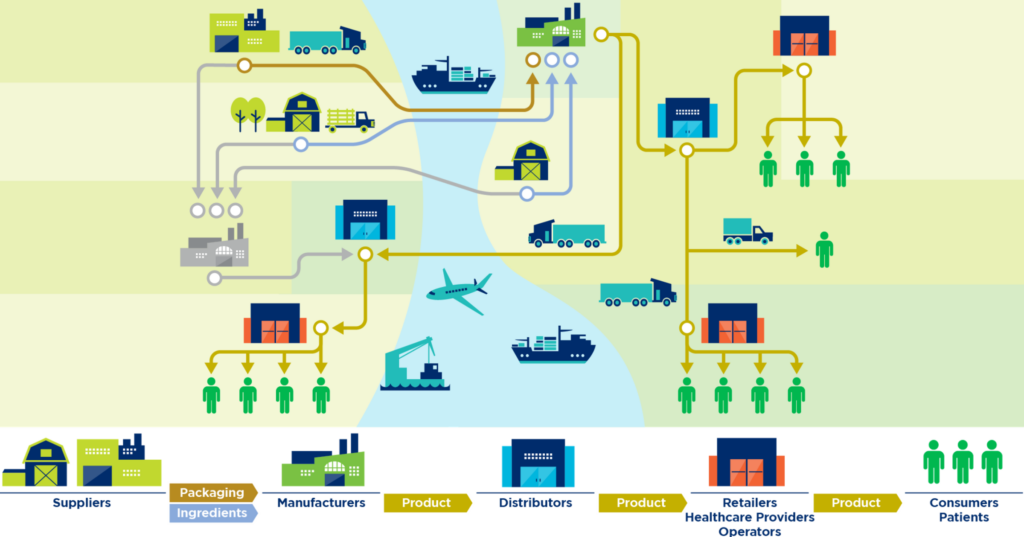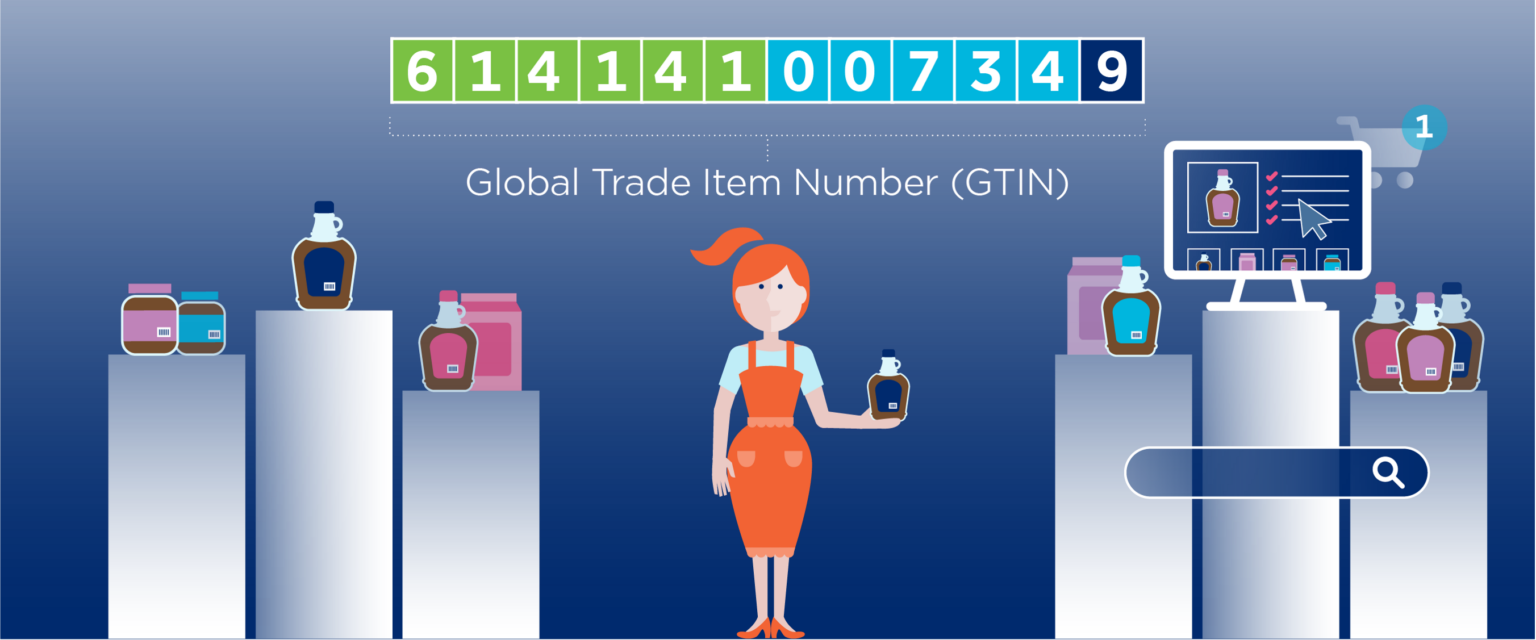Whether your business is just getting started, or you’re preparing to make an exit, one of your most valuable business assets is your eCommerce product data. Great data management will help you reduce costs, grow your channels, and maintain a healthy business. That’s why ensuring your data is accurate from day one is critical to getting maximum return. Many businesses use GS1 standards to form the foundation of their data strategy, and some members have even been able to quantify as much as $1.3 million in annual cost avoidance by maximizing truckload capacity based on them. Here’s how it works.
Start with a Unique Identifier
It may seem easy to keep track of your products when you only have a few SKUs and are selling direct-to-consumer. But the more you scale your product line and your sales channels, the more critical it will become to have a unique identifier for each product. That’s why growth-minded businesses turn to GS1 US and the Global Trade Item Number (GTIN) to identify their products.
You encounter GTINs every day; they’re the numbers printed below the UPC (Universal Product Code) barcode on most of the products you purchase in a store. This is why you will often hear GTINs called “UPCs” among online sellers. Unlike a SKU, a GTIN is part of a global identification system, ensuring your product identifier is unique and traceable throughout its journey in the supply chain. This also sets them apart from identifiers like the ASIN, which is designed to function within Amazon’s systems but not across all platforms and retailers.
GS1 US has a unique business model built on collaboration to help power supply chains. The organization enables companies to power their supply chains and deliver safe, consistent, authentic, and trusted experiences. Best known as the source for GTINs and UPC barcodes, GS1 is a global data standards organization that creates a common language for companies to identify, capture, and share trusted data that links their physical and digital supply chains.
eCommerce businesses come to GS1 US for GTINs because they are globally unique, meaning you can work with trading partners around the world and be confident your product identity will be valid and usable. Because the GTIN is a unique number, it also offers SEO advantages. Google Merchant Center advises that including a GTIN in your listing will help make your ads and listings richer and easier for customers to find, and it’s often required or recommended across many marketplaces, including Amazon and Walmart, meaning acquiring GTINs for your products is a great investment in your long-term online growth.

Plan for Growth
Per the U.S. Census Bureau, eCommerce sales accounted for 15.1% of sales in the first quarter of 2023 – meaning nearly 85% of retail sales are still happening in stores! Transitioning from a purely eCommerce business to an in-store or omnichannel brand means new and complex requirements from retail trading partners, but it also means tapping a huge market of potential customers.
Even if you aren’t seeking shelf-space for your products, becoming retail ready could make it that much more attractive to investors or if you are planning an exit. If you came to GS1 US to acquire GTINs for your product, you are ahead of the game, because the same GS1 Company Prefix that you use to create GTINs and UPC barcodes provides some additional, free benefits you may not have thought about when licensing.
For example, the Global Location Number (GLN) is used to identify physical locations or legal entities. It can be used to identify your company, or your manufacturing facility, or even a single shelf at your warehouse. The GLN is required by some retail partners (like Best Buy) but it’s also super useful in more regulated industries like food and healthcare, to enable product traceability in the event of a recall. Don’t sweat it if you encounter GLN requirements in retailer guidelines; if you have licensed a GS1 Company Prefix to create GTINs, you will be able to create GLNs as well and your company GLN will automatically be assigned.
Does my Product Need a Barcode?
If your eCommerce business is planning on expanding to in-store retailers, you will likely be required to put UPC barcodes on your products. These barcodes carry the GTIN and allow retailers to connect your product to a backend system where they can automatically update data, like the price. They also help retailers with inventory processes so they can confidently reorder your product! UPCs can be printed on stickers and applied to a product after manufacture, but it’s a good idea to consider UPC placement during product design. Printing barcodes directly on your packaging helps you ensure you won’t cover important copy with a sticker. Also keep in mind that adding stickers after the fact will add fulfillment costs, biting into your product margin.
If you are outside North America, you might use EAN (or European Article Number) barcodes. EAN and UPC barcodes are both part of the GS1 System of Standards and can be used interchangeably throughout the world.
Streamline Your Logistics
eCommerce business owners know that product margin is king. Fulfillment costs to pick-and-pack, dropship, prep for FBA, or dispense to a retailer need to be carefully understood to keep your margin healthy. But you need to consider other costs of working with fulfillment companies like intake costs for goods, monthly storage fees and returns. Fortunately, healthy eCommerce product data transmission will help you streamline your logistics and reduce the time it takes for 3PL to manage your product. Remember, their time = your money!
Use All the Tools Available to You
Managing your eCommerce product data can seem intimidating and costly, but it doesn’t have to be. Start with any tools you have available to you for free, including the GS1 Data Hub. Data Hub can simplify assigning GTINs to your products and GLNs to your locations. It allows you to add detailed product description and attributes to each product, forming a solid product catalog based on your unique GTINs. That catalog can be downloaded as a spreadsheet should you need to share it with a trading partner or a potential buyer.
Additionally, Data Hub can be used to generate many other types of barcodes which carry data, including the UPC, ITF-14, and GS1-128 barcodes. The barcode images can then be printed directly out of the program or downloaded and sent to your packaging designer or sticker/carton printer. Using GS1 Data Hub will help you build a solid foundation for your eCommerce product data, ensuring your GTINs and barcodes are correct.
Long Term Confidence
For many businesses large and small, the impact of using the GS1 Standards discussed here comes down to long term confidence in their eCommerce product data. By adhering to one way of doing business, one common language for product data, supply chains can function smoother and more economically, breaking the cycle of “garbage in, garbage out.” GS1 Standards give clarity to data enabling companies to power their supply chains and enable growth and confidence. To learn more about GS1 Standards and how they can help you manage your eCommerce product data, please visit https://www.gs1us.org/.
This blog was contributed by our partners at GS1.

